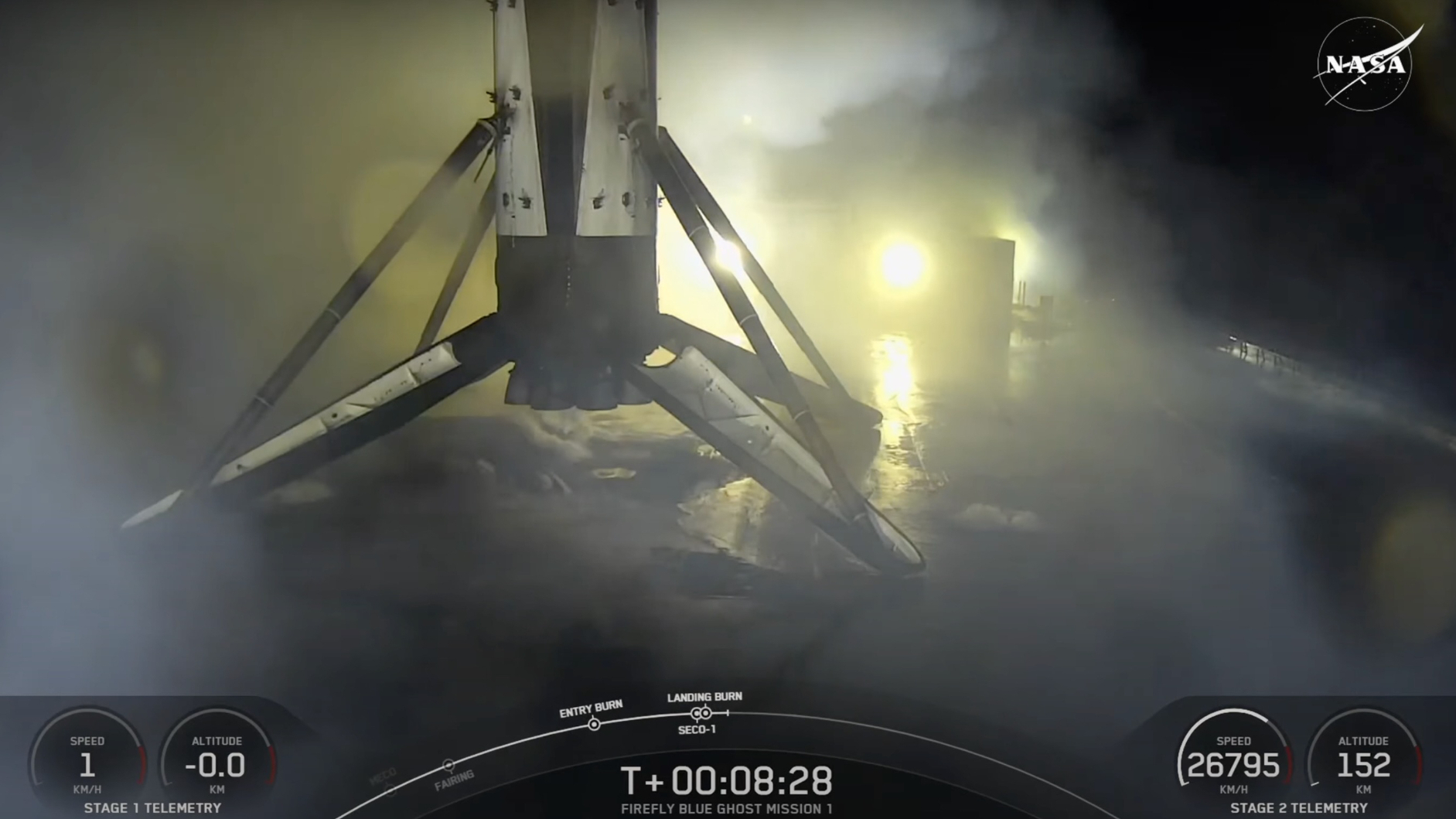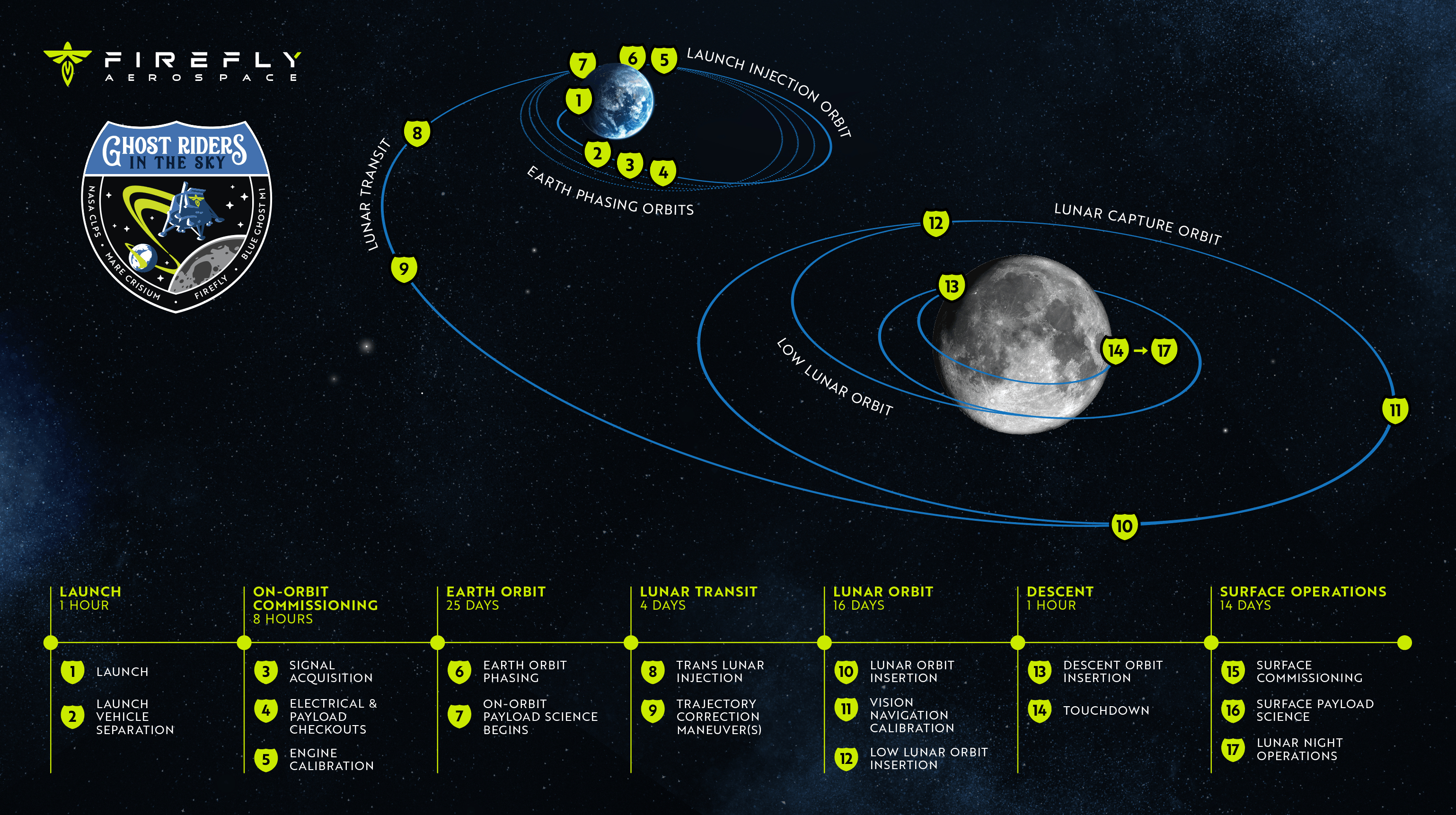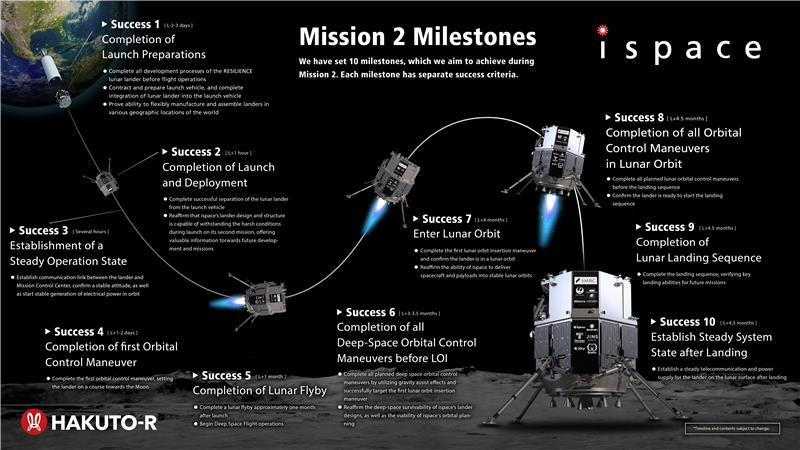SpaceX launches 2 private lunar landers to the moon (video, photos)
Blue Ghost and Resilience have left their home planet.
CAPE CANAVERAL, Florida — Get ready, moon: Two private landers have made it to space and will soon be headed your way!
The two lunar landers — Firefly Aerospace's Blue Ghost, and Resilience, built by the Japanese company ispace — lifted off aboard a SpaceX Falcon 9 rocket early this morning (Jan. 15) from NASA's Kennedy Space Center (KSC) here on Florida's Space Coast.
The Falcon 9 launched at 1:11 a.m. EST (0611 GMT) beneath a full moon and a clear, starry sky. The rocket's first stage came back to Earth as planned, touching down on SpaceX's "Just Read the Instructions" droneship, stationed miles offshore in the Atlantic Ocean, about 8.5 minutes after liftoff.

The rocket's second stage continued onward and upward as planned, delivering Blue Ghost to a lunar transfer orbit about 65 minutes after launch and deploying Resilience 27 minutes later.
This Blue Ghost flight, named Ghost Riders in the Sky, is Firefly's first mission to the moon and is part of NASA's Commercial Lunar Payload Services (CLPS) program. The lander is carrying 10 NASA research and technology payloads designed to further the space agency's understanding of the lunar environment, as it plans to send astronauts back to the moon as a part of the Artemis Program.

This is the second mission that ispace has flown to the moon; the company's' Hakuto-R lander made it to lunar orbit in March 2023 but crashed during its touchdown attempt a month later.
Blue Ghost will spend 25 days in Earth orbit, undergoing systems checks and beginning operations of some of its scientific payloads. It will then start a four-day trek to lunar orbit, where it will stay for an additional 16 days before attempting a touchdown in Mare Crisium ("Sea of Crises"), on the northeasterm part of the moon's near side.
Get the Space.com Newsletter
Breaking space news, the latest updates on rocket launches, skywatching events and more!
Once on the surface, Blue Ghost will have about two weeks — a full lunar day — for its scientific and research operations. The solar-powered lander's 10 CLPS payloads is a record for the lunar cargo delivery program. Many of the investigations are focused on investigations into lunar regolith, or moon dust.

Resilience is taking a very energy-efficient path to the moon and therefore will get there after Blue Ghost does. If everything goes to plan, the Japanese lander will touch down in Mare Frigoris ("Sea of Cold"), in the moon's northern hemisphere, about 4.5 months from now.
One of Resilience's payloads is a microrover named Tenacious, to be deployed on the lunar surface after a successful landing. The rover is designed to collect a sample of regolith as part of a separate contract with NASA.

The launch of Blue Ghost and Reslience kicks off a busy year of moon missions. Houston-based company Intuitive Machines, which completed a successful lunar landing with its first Nova-C lander, Odysseus, in February 2024, is expected to launch its IM-2 mission as soon as next month.
Like its predecessor, IM-2 will carry NASA CLPS payloads, which will study the possible abundance of water ice at the moon's south pole, among other tasks. Intuitive Machines' IM-3 mission is expected to launch later in 2025, as is Griffin Mission One — a second moon landing attempt from Pittsburgh-based company Astrobotic, which failed on its first moon mission in January 2024, with a different lander named Peregrine.
Editor's note: This story was updated at 2:45 a.m. ET on Jan. 15 with news of successful deployment of Blue Ghost and Resilience.
Join our Space Forums to keep talking space on the latest missions, night sky and more! And if you have a news tip, correction or comment, let us know at: community@space.com.

Josh Dinner is the Staff Writer for Spaceflight at Space.com. He is a writer and photographer with a passion for science and space exploration, and has been working the space beat since 2016. Josh has covered the evolution of NASA's commercial spaceflight partnerships and crewed missions from the Space Coast, as well as NASA science missions and more. He also enjoys building 1:144-scale model rockets and human-flown spacecraft. Find some of Josh's launch photography on Instagram and his website, and follow him on X, where he mostly posts in haiku.
